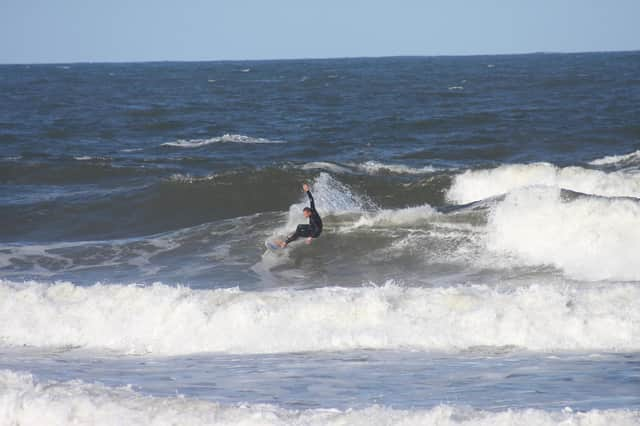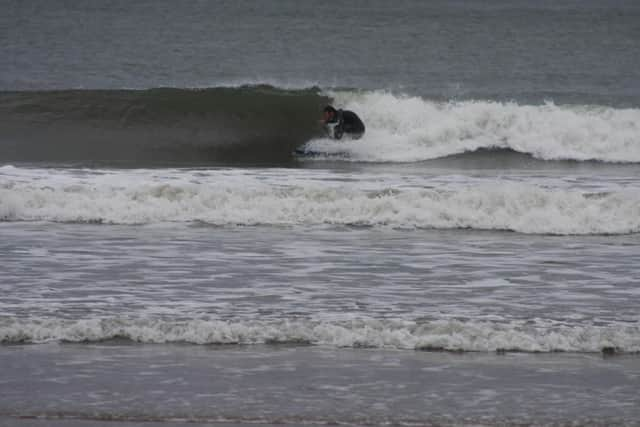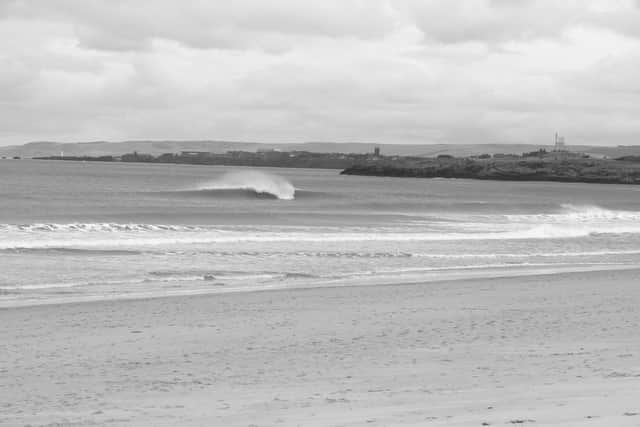Five reasons why autumn is the best time to go surfing in Scotland


1) Bigger, better waves more of the time. It is a truth universally acknowledged that as August gives way to September, the waves around our coasts take it upon themselves to get bigger and more powerful. In July, the average swell height on a surfable day at an east coast spot like Belhaven Bay near Dunbar is just four feet, but that increases to six feet in September and seven feet in October and November. Importantly, the waves also get more consistent. In July it’s only possible to surf at Belhaven for 11 per cent of the time, but that increases to 18 per cent in September, 31 per cent in October and 33 per cent in November. Or, to put it another way, if you pick a random day to go to the beach in November, you have a one-in-three chance of finding a rideable wave, as opposed to a one-in-ten chance in July.
2) The weather is still your friend. Statistically speaking, the waves are even better in the winter than they are in the autumn. However, if given the choice between surfing eight-foot waves in the snow in February and six-foot waves on a balmy evening in September, most surfers would take the latter option. Also, because the sea takes a long time to warm up and a long time to cool down again, on both the North Sea and Atlantic coasts the water temperature doesn’t peak until August. In September it tends to be about the same as it is in July, with October about the same as June. It isn’t usually until November that hoods and gloves start to become must-have items.
Advertisement
Hide AdAdvertisement
Hide Ad3) You can still see what you’re doing. At the start of September, the sun rises at 6:25am in Edinburgh and sets at 7:55pm, making both pre-and post-work surfs a very real possibility for anyone working a Monday-to-Friday, nine-to-five-type job. By mid-October, with sunrise hovering around 8am, things might be getting a bit tight for that 9am meeting, but then the clocks go back (at 2am on 25 October this year) and boom, as if by magic, sunrise is back to 7:05am. From this point on, post-work evening sessions will be well and truly scuppered by pre-5pm sunsets, but the sunrise time doesn’t creep back up to 8am again until 21 November, so pre-work dawn missions are still on the menu. By the start of December, though, nine-to-fivers will have to get all their surfing done at weekends.


4) There are more places to surf. Bigger waves and bigger winds, occasionally swinging in from unusual directions, can light up surf spots that have lain dormant all summer long. The beach at Gullane isn’t usually anyone’s idea of a surf spot, but occasionally in the autumn a big south-easterly gale will hammer the east coast with enough force to send waves swinging right around the point at the north-east tip of the bay. As an extra bonus, because Gullane faces north-west, the waves breaking there will also be fanned by an offshore wind, while the rest of the east coast is a horrible, churning, unsurfable mass of whitewater. Similarly, on the Isle of Tiree, a howling westerly will sometimes push swell into the south-east-facing beach at Crossapol where, again, the wind will be blowing offshore. There can be few experiences more surreal in Scottish surfing than leaving an island on the edge of the Atlantic and paddling in an easterly direction to meet waves that appear to be coming from the mainland.
5) Absence makes the heart grow fonder. Even in a normal year, the first surf of autumn can feel a bit like getting reacquainted with an old friend. This year, though,that will be even more the case than usual. Most of Scotland’s surfers live more than five miles from their nearest surf spot, so for them lockdown was effectively a three-and-a-half-month surfing ban. True, summer has produced some fun days so far, and there may be a few more to come, but when that first really solid swell of the autumn hits, after all those weeks of being dry-docked, every drop-in and every turn will taste just that little bit sweeter.
A message from the Editor
Thank you for reading this story on our website. While I have your attention, I also have an important request to make of you.


With the coronavirus lockdown having a major impact on many of our advertisers - and consequently the revenue we receive - we are more reliant than ever on you taking out a digital subscription.
Subscribe to scotsman.com and enjoy unlimited access to Scottish news and information online and on our app. With a digital subscription, you can read more than 5 articles, see fewer ads, enjoy faster load times, and get access to exclusive newsletters and content. Visit https://www.scotsman.com/subscriptions now to sign up.
Joy Yates
Editorial Director